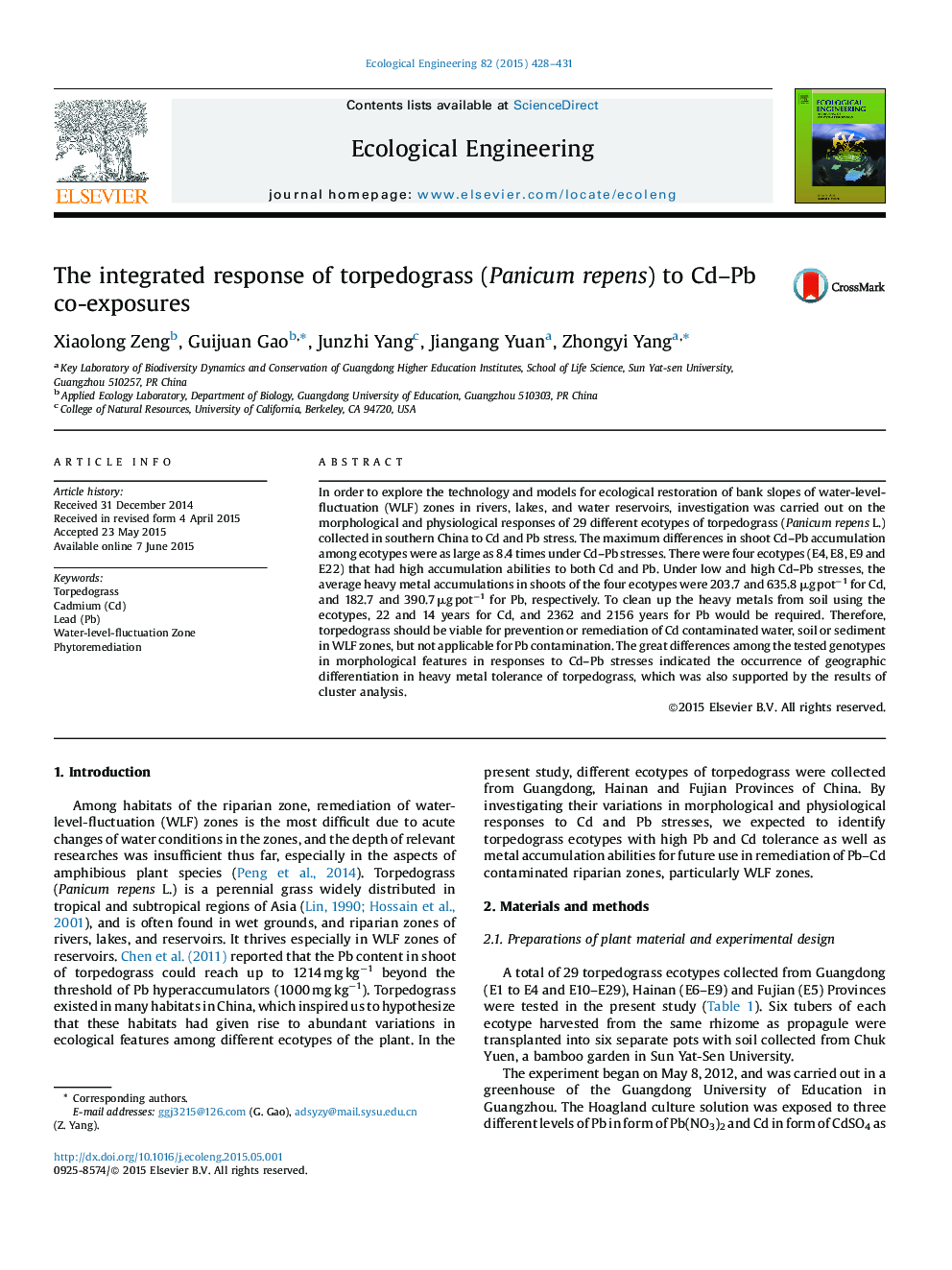| کد مقاله | کد نشریه | سال انتشار | مقاله انگلیسی | نسخه تمام متن |
|---|---|---|---|---|
| 4388991 | 1618017 | 2015 | 4 صفحه PDF | دانلود رایگان |

In order to explore the technology and models for ecological restoration of bank slopes of water-level-fluctuation (WLF) zones in rivers, lakes, and water reservoirs, investigation was carried out on the morphological and physiological responses of 29 different ecotypes of torpedograss (Panicum repens L.) collected in southern China to Cd and Pb stress. The maximum differences in shoot Cd–Pb accumulation among ecotypes were as large as 8.4 times under Cd–Pb stresses. There were four ecotypes (E4, E8, E9 and E22) that had high accumulation abilities to both Cd and Pb. Under low and high Cd–Pb stresses, the average heavy metal accumulations in shoots of the four ecotypes were 203.7 and 635.8 μg pot−1 for Cd, and 182.7 and 390.7 μg pot−1 for Pb, respectively. To clean up the heavy metals from soil using the ecotypes, 22 and 14 years for Cd, and 2362 and 2156 years for Pb would be required. Therefore, torpedograss should be viable for prevention or remediation of Cd contaminated water, soil or sediment in WLF zones, but not applicable for Pb contamination. The great differences among the tested genotypes in morphological features in responses to Cd–Pb stresses indicated the occurrence of geographic differentiation in heavy metal tolerance of torpedograss, which was also supported by the results of cluster analysis.
Journal: Ecological Engineering - Volume 82, September 2015, Pages 428–431